OPEN VS. PRO WEIGHTS
Have you ever wondered how much Hyrox times would vary if the top athletes competed in the Open division instead of the Pro division? Fortunately, we’ve had several former world champions and Elite 15 competitors do that in 2025 already. Of course, no two Hyrox courses are exactly the same, so comparing an athlete’s lifetime Pro PR vs. their Open time at a specific event in early-2025 isn’t exactly an apples-to-apples comparison. However, this opportunity doesn’t happen often, so let’s take a look at the data.
Women
The pink line represents if an athlete had the same exact PR using Open weights in Washington, DC as their lifetime PR using Pro weights. Any value below the pink line means they ran faster in DC while using Open weights (their ratio will be less than 1), while any value above the pink line means their Pro PR is actually faster than their Open time in DC (their ratio will be greater than 1).
Washington, DC
Lauren Weeks just broke the women’s Pro world record less than a month ago with a time of 56:23 in Glasgow. She’s probably still in similar shape, so what perfect timing to see how fast Lauren could run with Open weights. Fast forward 3 weeks later and she crossed the line in 55:38 in Washington, DC, setting the fastest time ever run by a woman using Open weights. Lauren’s ratio of her Open time in DC vs. her Pro PR was 0.987, meaning she was only 1.3% slower with Pro weights vs. Open weights when comparing both world records. That’s insane when you think about it.

There were 35 female athletes with a Pro PR faster than 1:30 who also ran in the Open division in DC, and all but 2 of them ran faster with Open weights than Pro weights. Most of the data points are clustered together and there is a positive correlation between the data points (R2 = 0.83). It’s not perfect and the sample size is limited, but here are estimates of how fast a woman might expect to run using Open weights based on her Pro PR (based on results from the Washington, DC Open race):
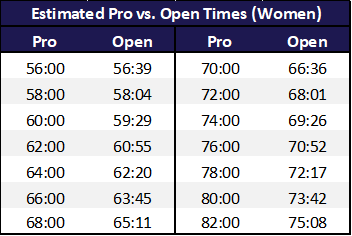
Vienna
The Vienna race in late-February also featured many of Europe’s best Hyrox athletes in the Pro division dropping down to the Open division. How did their performances compare to those we saw in Washington, DC just 5 weeks later? Most of the women in Vienna with a Pro PR under 75:00 tended to have an Open/Pro ratio closer to 0.90, but many of those with slower Pro PRs had a much lower ratio in Vienna, meaning they performed much better with Open weights compared to Pro.

MEN
Washington, DC
There were 92 male athletes with a Pro PR faster than 1:30 who also ran in the Open division at Washington, DC. Of these 92 male athletes, nearly 90% of them ran faster with Open weights than Pro weights. Dylan Scott’s ratio of his Open time in DC vs. his Pro PR was 0.966, meaning he was 3.4% faster with Open weights vs. best Pro time. Men with a Pro PR faster than 68:00 mostly had a ratio of 0.94-0.98 using Open weights in DC, but the results started becoming less predictable after that.
Most of the data points aren’t clustered together, though, and there’s only slight positive correlation between the data points (R2 = 0.54). Unfortunately, that means there isn’t a reliable formula you can use to predict how much faster male athletes should be able to run using Open weights vs. Pro weights.

Take a look at the box-and-whisker plot below. The middle 50% of results (slowest-to-fastest) fall within the wide rectangle in each column. In simpler terms, a short box means most values on the y-axis are pretty similar for that column, while a tall box means values for that column can vary a lot. As you can see, the fastest men (Pro PR less than 70:00) have a pretty small spread, while the remaining groups have a much larger range of values. Why is that?

Take an athlete like Derek Yorek, for instance. On paper, Derek came into the race with the 26th-fastest Pro PR in the field, 14:33 slower than Dylan Scott, but he ended up finishing 6th, only 3:10 behind Dylan. Derek is a phenomenal runner (27:34 for his 8k run split in Washington, DC) and has a long history with CrossFit and hybrid racing. However, he isn’t as heavy as a lot of the top men, so he often has slower zone times with the heavier Pro weights than top Pro athletes with similar run ability. A high-level runner, like Derek, can fight for an overall podium in the Open division at nearly any race due to lighter weights and his fast running, but it typically doesn’t work the other way around when similar athletes move up to the Pro division.
Vienna
In Vienna, there were over twice as many male athletes with a Pro PR faster than 1:30 who also ran in the Open division at Washington, DC (220 vs. 92). Of these 220 male athletes, 95% of them ran faster with Open weights than Pro weights. Alexander Roncevic’s ratio of his Open time in Vienna vs. his Pro PR was 0.988, meaning he was 1.2% faster with Open weights vs. best Pro time. That’s remarkably similar to Lauren Weeks’ ratio of 0.987.
Just like the men’s results for Washington, DC, most of the data points aren’t clustered together and there’s only a slightly better correlation between the data points (R2 = 0.65).

Vienna had a ridiculously deep field for a non-Elite 15 race, as there were 12 men with a lifetime Pro PR under 60:00 and 24 more with a lifetime Pro PR between 60:00-65:00. Once again, if we focus on the fastest athletes (sub-65:00 Pro PR), their box-and-whisker plot shows that most male athletes had an Open/Pro ratio of 0.90-0.96, while athletes with a Pro PR of 65:00-75:00 had a slightly lower ratio. Like my explanation above for Derek Yorek, I imagine that several very fast runners were in the men’s field in Vienna and were much more competitive than usual due to the lighter Open weights. The Open results are all over the place for athletes with a Pro PR of 75:00 or slower, much like we saw in the men’s Washington, DC results.

WASHINGTON, DC VS. VIENNA
I looked at the 40-fastest Open times on the day for Washington, DC and Vienna then plotted the Open/Pro ratio for each of those athletes. Almost universally, athletes in Vienna had a lower Open/Pro ratio than athletes in Washington, DC. This suggests that either the sleds were faster in Vienna, athletes in Europe simply perform better than North American athletes when using Open weights, or a combination of both.


CONCLUSION
Athletes with a fast PR using Pro weights tend to have a smaller gap between their Pro PR and their Open time. They’re typically so dialed-in with their training that there isn’t much room to improve, even when the weights get lighter. After all, at least 2/3 of the time you’ll spend on-course (ski erg, row, burpee broad jumps, and all of the running) will be the exact same no matter which division you’re in. That means less than 1/3 of your total time on course is spent in zones with heavier Pro weights (sled push, sled pull, farmer’s carry, lunges, and wall balls). The athletes who tend to “over-perform” relative to their Pro PR when they switch to the Open division are the fastest runners.
Maybe we’ll never know the perfect ratio to predict an athlete’s fastest Open time vs. their fastest Pro time. However, at least Lauren Weeks and Alexander Roncevic finally answered the question about how much faster a former Hyrox world champion can run using Open weights vs. Pro weights.


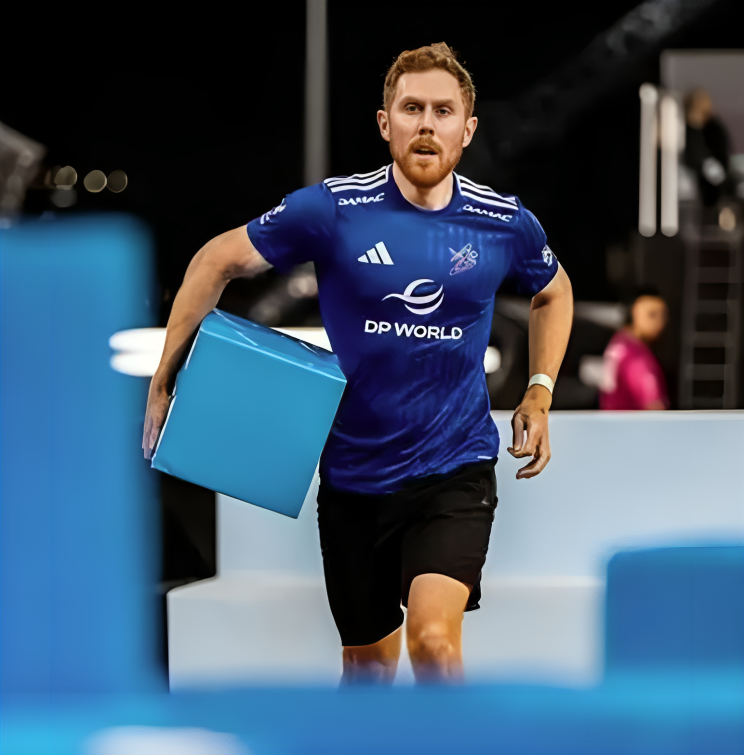
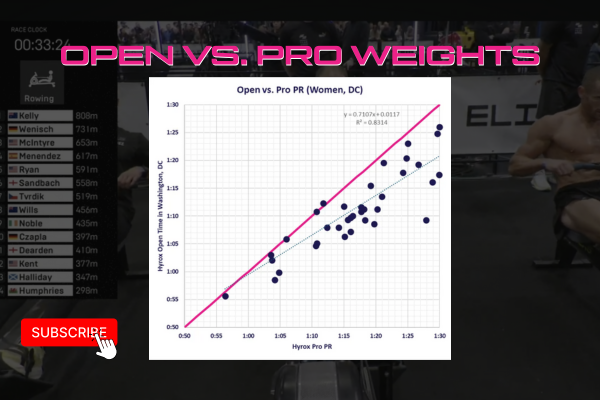
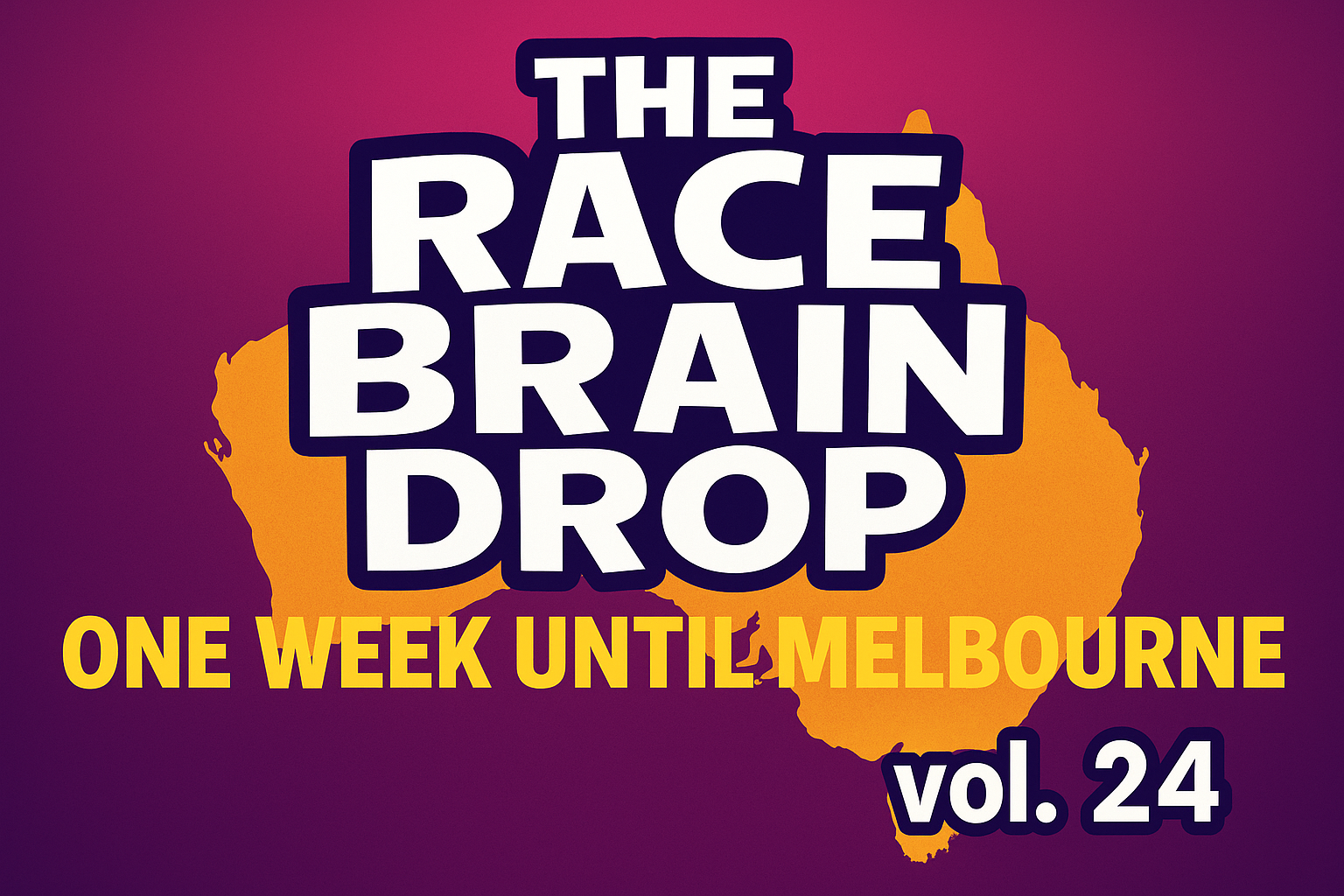






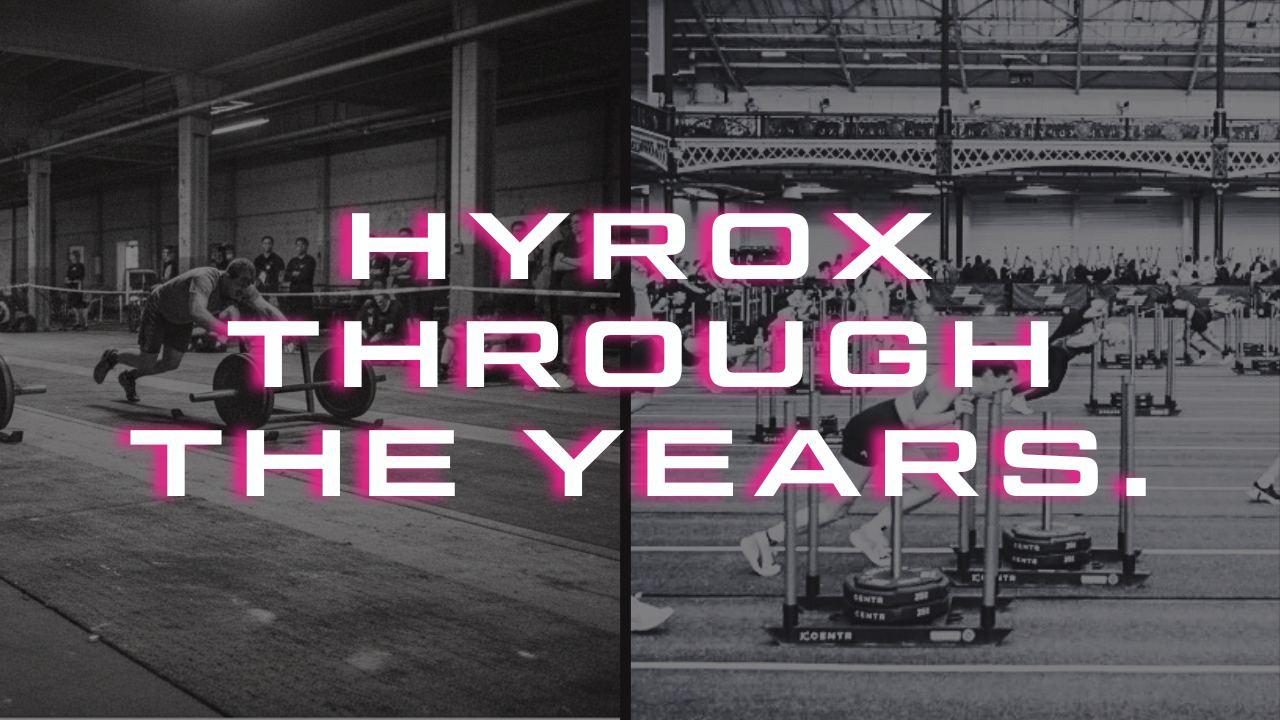




Discussion